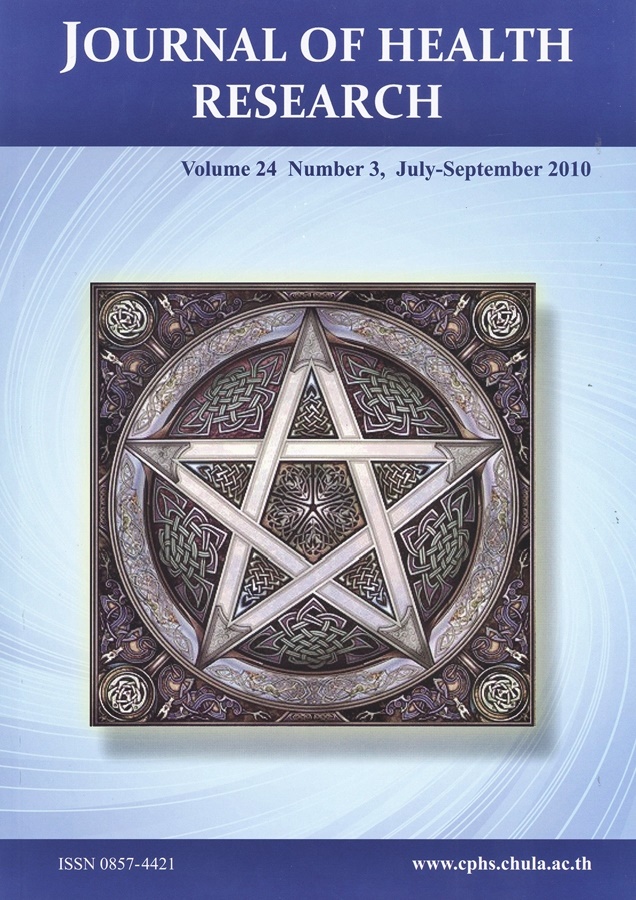Risk Evaluation of Trichloroethylene Exposure among Workers in Industry
Keywords:
Trichloroethylene, trichloroacetic acid, risk assessment, Gas Chromatography/Mass SpectrometryAbstract
The health risks of twenty five workers exposed to trichloroethylene in three factories were studied. Trichloroethylene in the breathing zone of the workers was collected for a full shift following the NIOSH method number 1022 and urine samples were also collected for analysis of trichloroacetic acid metabolite by Gas Chromatography/Mass Spectrometry. The results showed that average concentrations of trichloroethylene in the breathing zone of workers were 15.85 ppm. Thirteen workers (52%) exposed to higher trichloroethylene concentrations than the 10-ppm Threshold Limit Value-Time Weighted Average (TLV-TWA) recommended by the American Conference of Governmental Industrial Hygienists (ACGIH). The average urinary trichloroacetic acid of workers was 90.92 mg/g creatinine (Non-detectable to 349.33 mg/g creatinine). Most workers (88.0 %) had a lower concentration of urinary trichloroacetic acid than the BEI (100 mg/g creatinine) recommended by the ACGIH. Cigarette smoking (p-value = 0.028) had relationship with urinary trichloroacetic acid. There was a fairly high significant correlation between trichloroethylene in the breathing zone of workers and urinary trichloroacetic acid (r = 0.657; p-value < 0.01). This health risk assessment of trichloroethylene exposure found that the workers had excessive cancer risk when using trichloroethylene. The estimated lifetime cancer risk of trichloroethylene exceeded the range of 10-6-10-4 recommended by U.S.EPA.







